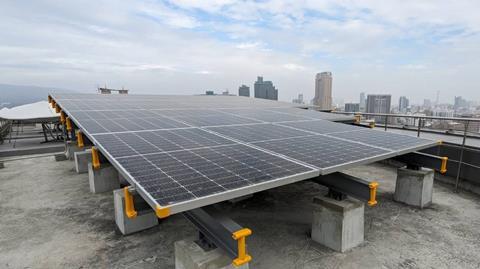Global climate change is challenging nations around the world to implement comprehensive carbon emission measures to achieve ‘net-zero’ standards.

As encapsulated in the national policy document “Blueprint for 2050 Net-Zero Emissions”, related efforts in Taiwan are focused on realizing transformative change nationwide in four key dimensions, namely Energy, Industry, Lifestyle, and Society. The smart power microgrid installed this year (2024) at Kaohsiung Port Cruise Terminal reflects Taiwan International Port Corporation (TIPC)’s commitment to contribute significantly in the Energy dimension. This microgrid integrates three key systems responsible, respectively, for Energy Management System(EMS), photovoltaic power generation (12.9kWp), and Energy Storage System (2MWh).

EMS uses artificial intelligence (AI)-enhanced applications to monitoring, collect, and analyze big data flows to generate statistics on power usage and generation in real time; do AI model training and estimation to achieve electrical load and photovoltaic power generation forecasting, all to facilitate smart decision-making, demand response, and energy management calculations. With photovoltaic power generation and energy storage, this highly responsive system allows terminal building to implement peak shaving during peak-demand periods, reduce operating energy consumption costs while raising energy-use efficiencies, and raise both electric reliability and the amount of green energy utilization. Also, the system can run in ‘island’ mode, provide emergency backup power, and sustain normal power supplies. Using IoT-linked smart detectors, data on key variables (e.g., luminosity, humidity, temperature, foot traffic) can be collected and used by other smart applications in the terminal to maintain optimal environmental comfort for staff, tourists, and other visitors at the lowest overall energy cost.

TIPC administers all 7 of Taiwan’s international and two of its domestic commercial ports, with critical port operational and infrastructure development responsibilities. The entire organization is committed to green energy both in terms of promoting the growth and success of the domestic green energy sector and of maintaining international eco-port certification for TIPC ports. It is hoped that the example set by Kaohsiung Port Cruise Terminal and, in the future, the port’s 7th Container Terminal will spur TIPC’s other commercial ports to complete similar PV power generation and storage facilities by 2026 to help Taiwan move further along the path to net-zero realization.
Provided by Construction Management & Engineering Dept., TIPC
Contact Person:
Wei-cheng Chung, Manager
07-5219000 ext. 5170 | glob1027@twport.com.tw












